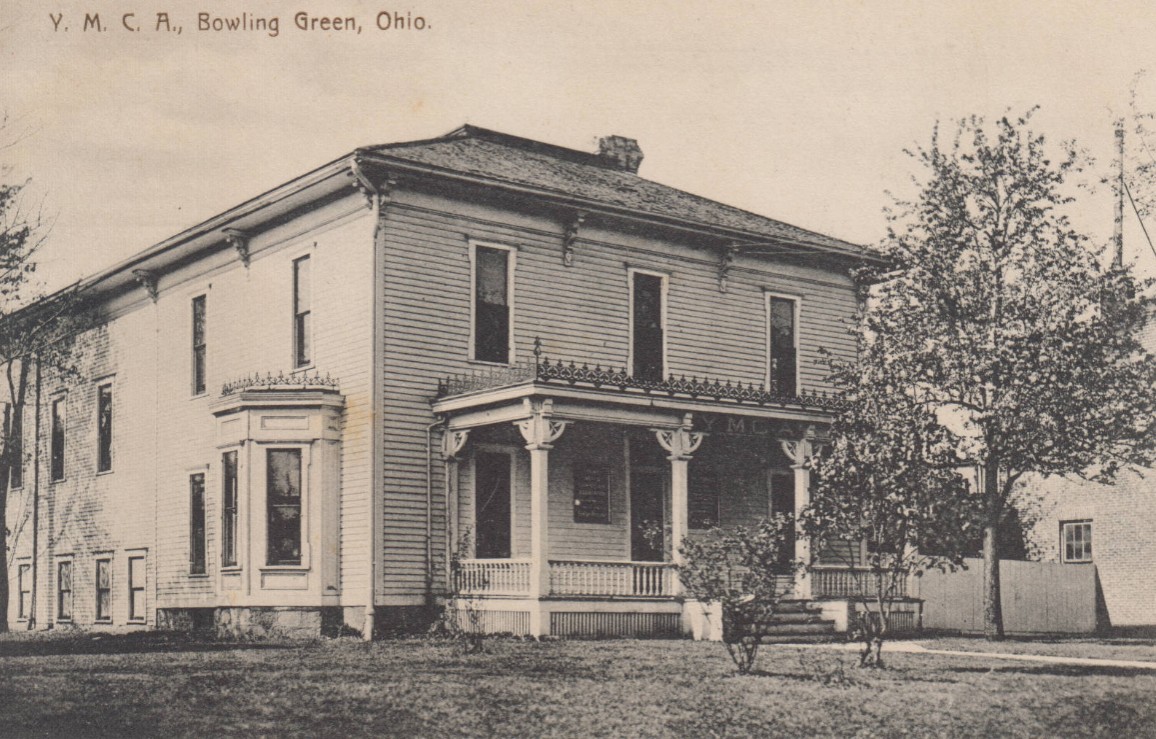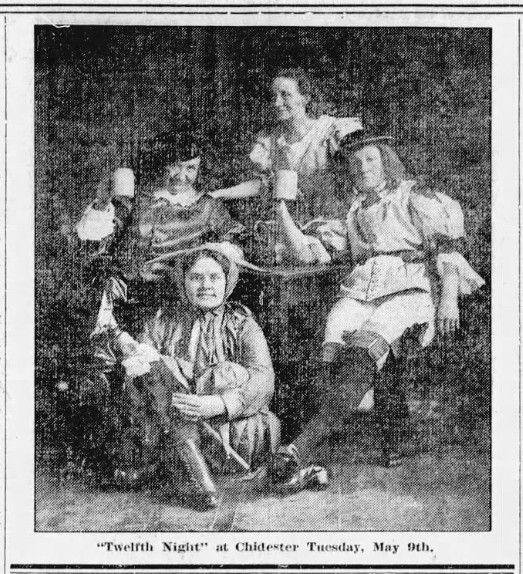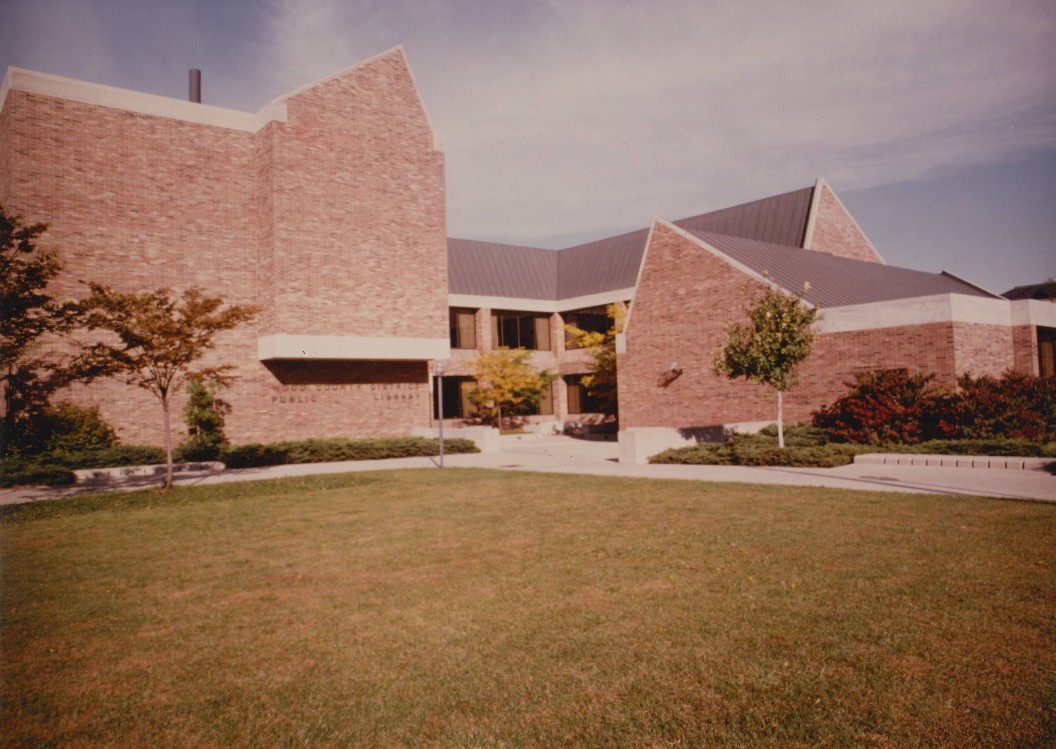1875-1928: Early Hopes for a Library & the Shakespeare Round Table
1875 – In December of 1874, a group of prominent local men begin discussing the possibility of starting a local library in Bowling Green. On January 21, 1875, they officially establish the Bowling Green Library Association. The group includes William Hood (president), A.D. Stewart (secretary and treasurer), C.W. Evers, John W. Canary, S.P Harrison, and Joseph Hollington. The library is subscription-based with shares costing $5 each (around $150 today). A share allows citizens to borrow one book at a time. Lucius Boughton is appointed the first librarian, and the library is “located in a building owned by him.” The library moves around for several years, depending upon who is currently serving as librarian. The library is a success for a number of years, but begins struggling for membership around 1884. It ceases operation by 1888.

1894 – Articles appear regularly in local papers urging citizens to “agitate public library.” Multiple organizations take up the call and attempt to start a public library, most notably the Bowling Green Literary Society and the Y.M.C.A. In fact, the latter even houses a reading room with a free circulating collection of books for a number of years.
1900 – Bowling Green City Council joins the conversations about starting a public library. A group of citizens circulate a petition urging council to establish a public library in rooms of the new city building on W. Wooster. It is argued that these rooms were always intended to be a public library. The Y.M.C.A. offers to move its collection to these rooms to help establish the library.

1911 – In the spring, the Shakespeare Round Table holds a meeting (chaired by Mrs. Grace Haylor) where they decide to launch a campaign to establish the first public library in Bowling Green. The campaign is funded by holding teas, bake sales and public performances of Shakespeare plays, including a performance of Twelfth Night in which all the roles were played by female actors.

1914 – The women of the Shakespeare Round Table open the first library location in the back of the Exchange Bank on the northwest corner of Main and Wooster Streets. It is called the Bowling Green Library at this time, and its initial collection consists of 1,200 books. Many of these books come from the organization’s own library. Despite their goal of having a truly free public library, this library initially has a membership fee of $1/year, 60¢/6 months, or 35¢/3 months in order to cover operational costs. Grace Haylor is named the first librarian.


1919 – In February, the library moves to the McKenzie/Kabig building on the southwest corner of Main and Court Streets and is renamed the Wood County Public Library, despite still having the $1/year membership fee. It takes up the entire second floor.

1928 – The Wood County Public Library and High School Library merge to become The Bowling Green School District Library. It is located inside the new (at the time) high school building on West Wooster, and 10,000 books are moved to the new location. While at this location, popular library events like storytime and summer reading programs begin happening. Miss Adeline Halleck becomes Head Librarian.


1940-1969: Growth & Growing Pains
1949 – Miss Helen Munsel becomes Head Librarian. She began her work with the library in 1937 as a page.

1949 – The Bradner branch opens inside the Bradner Town Hall. Mrs. Merritt Keller is appointed as the branch manager. It is open two days a week.

1951 – Although the library was well aware of the need for outreach services for over a decade, World War II delayed the library’s ability to implement these services until 1951. The bookmobile begins service on March 19 with Mary Alice Fitch as the first Bookmobile Librarian and Huber Jones as the driver. Service runs 4-5 days a week, and during the first two weeks, over 2,500 books are circulated via the bookmobile.

1956 – When Church Street School closes, the library board purchases, extensively renovates, and relocates the Bowling Green School District Library into this location. The high school library then becomes a branch of this main library and is only used by students of the high school. The new library on Church Street opens to the public on October 1.

1957 – The library expands outreach and adult education with “on the spot” delivery service throughout the county via a station wagon. Mrs. Florence Caris oversees the service and is named the Extension Librarian. The service is in addition to the existing bookmobile services. By 1966, the Bowling Green Library is the only one in the state offering the service, which it provides to around 45 families.
1966 – Great Eastern branch library is officially opened in January. The librarians at the branch are Irene Omori and Ruth Wolfe. It operates until April 1987.

1968 – Miss Marian Parker becomes Library Director, the first person to hold that title.

1969 – In July, the library is renamed the Wood County District Public Library and placed under the jurisdiction of the Wood County Commissioners. It now serves anyone within Wood County that is not served by another library entity.
1970-1999: New Home & New Technology
1973 – In May, construction begins on a new library building at 251 N. Main Street. The building opens to the public on Aug 7, 1974, and its official dedication is held Oct 13, 1974.

1984 – In October, the first computerized card catalog and circulation system is implemented. The device used for this is called “The Library Machine.”

1986 – The ground-breaking ceremony for the Walbridge branch library is held on Oct 26. Talks about a branch in Walbridge date back as far as 1964. On April 13, 1987, the branch officially opens, and its collection consists of about 10,000 books.

1987 – Elaine Paulette becomes Library Director.

1994 – Wood County Library Foundation is established to help maximize the library’s funding opportunities. It is announced during the library’s celebrations for 20 years at the Main Street location.
1996 – First public computers with internet access are installed. The first ‘tech lab’ is created the following year in 1997.

2000-Today: The Library Moves into the 21st Century
2001 – Library joins a consortium of libraries called SEO. This enables patrons to share materials between libraries throughout the state.
2001 – Fundraising efforts begin for renovating the main branch in Bowling Green. The capital campaign sets a goal of $725, 000 and raises $800,000. The following year, a 25 year bond issue is successfully passed to raise $5 million.

2002 – Library moves to a temporary location inside the old Churchill's Grocery at 1141 S. Main while the Main St. location is renovated. The newly renovated building at 251 N. Main St. reopens in June 2003.

2001 – The library begins making eBooks available to patrons for the first time. They are initially available on a device called a Rocket eReader.
2003 – On May 18, the Bradner branch library closes due to state budget cuts.
2003 – The library holds its first “Community Reads” event with Rocket Boys by Homer Hickam. The Community Reads events, which bring a number of highly acclaimed and internationally known authors to Bowling Green, continue through 2017.

2007 – Walbridge branch is renovated. The building is re-dedicated on Aug 14.
2010 – In an effort to be environmentally friendly and forward thinking, the library puts a new natural gas-powered bookmobile into service on March 17. The vehicle remains in service until 2024 when it is replaced.
2010 – For the first time in its 135-year history, WCDPL seeks local operating funds via a tax levy to offset losses in state funding. Voters pass the levy on Nov 2 and vote to renew it again in 2014 and 2020.
2011 – Michael Penrod becomes Library Director.
2013 – The library opens the Carter House for public and private events on June 22. The home was acquired by the library in 2006.

2016 – Walbridge branch is expanded and renovated. The grand re-opening is held on March 3.

2017 – Arguing that the burden of fines cuts into the mission of serving the people, the library joins the growing trend of doing away with fines for late materials.
2019 – Foundation Speaker Series debuts with two speakers for the year: Beth Macy and Nate Blakeslee. In following years, the Foundation hosted Mae Jemison, Danny Trejo, and Sonia Manzano.
2020 – The coronavirus pandemic and state-mandated closures force the library to close its doors to the public in the name of safety. The library remains closed from March 14 – May 18. Staff work from home during this time, innovating unique ways to continue serving and interacting with the public despite the closure.

